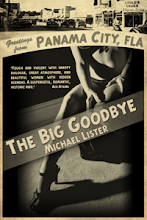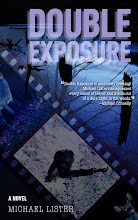
Philip Seymour Hoffman’s sweet, sad, sublime, “Jack Goes Boating” is a small film about the biggest of things—things like love and loneliness and relationships and dreams and imagination and fear and betrayal and unforgiveness and life and death. It deals delicately with the beginning of one relationship and the deterioration and death of another.
Jack (Philip Seymour Hoffman—who also directs the film) and Connie (Amy Ryan) are two single people who on their own might continue to recede into the anonymous background of the city, but in each other begin to find the courage and desire to pursue their budding relationship. In contrast, the couple that introduced them, Clyde (John Ortiz) and Lucy (Daphne Rubin-Vega), are confronting unresolved issues in their marriage.
Jack is a limo driver with vague dreams of landing a job with the MTA and an obsession with reggae that has prompted him to begin a half-hearted attempt at growing dreadlocks. He spends most of his time hanging out with his best friend and fellow driver Clyde and Clyde’s wife Lucy.
The couple set Jack up with Connie, Lucy’s co-worker at a Brooklyn funeral home. Being with Connie inspires Jack to learn to cook, pursue a new career and take swimming lessons from Clyde so he can give Connie the romantic boat ride she dreams of. But as Jack and Connie cautiously circle commitment, Clyde and Lucy’s marriage begins to disintegrate. From there, we watch as each couple comes face to face with the inevitable path of their relationship.
The four characters who people “Jack Goes Boating” are isolated icebergs, adrift, bumping into one another, the bulk of their beings unseen, floating beneath the surface, each deeper and darker than they appear.
Jack seems simple, even slow, but he is guileless and deliberate. He, no less than Connie, Clyde, and Lucy, is wounded, suffering from insult and injury, but most of all from isolation.
Jack and Connie, at the very beginning of their relationship, bring into it the damage and baggage from their previous lives and relationships. Clyde and Lucy have not only this, but the open wounds they’ve inflicted on one another. Lucy tells Jack, “You’ve never been in a relationship. A lot happens. Lot of good things. Lot of things you wouldn’t wish on your enemy.” Lucy has hurt Clyde in ways she wouldn’t wish on her enemy, and though Clyde says he’s worked through them, there’s real, deep-seated pain just beneath his mask of near constant conviviality, just behind his kind eyes.
Perhaps more than anything else, “Jack Goes Boating” is about dreams. Dreaming—actually imagining a different reality, is the beginning of all things. “Jack Goes Boating” vividly and profoundly demonstrates the connection between imagination and accomplishment, between visualization and manifestation, and shows how closely and intimately related to love they are.
On the shelf beside Connie’s bed, half hidden by a picture frame is a word carved from wooden letters affixed to a stand. Only three letters of the word are visible, but I’m certain the word is dream. It sits there next to where Connie dreams, where Jack and Connie lie as they softly say what they’re looking for in their “dream” partner.
Jack and Connie dream of lives different than the ones they have—lives less lonely, lives lived in love with a loved one.
What is required for such lives? The desire, of course, then the dream—the imagining, the visualizing—and then the leap, the choice to live in love not fear, the action that enables love to conquer, then vanquish, fear.
It all begins with the thing Einstein said was far more important than intellect. Imagination.
In the myth of the Tower of Babel, when the Lord comes down and sees what the humans are up to—building a tower to heaven, building a civilization, making a name for themselves—the Lord says because of their imaginations nothing they dream up and set their collective minds and hands to will be impossible for them, and so confused their language so they couldn’t understand each other. Like Jack, and the people in the story of the Tower of Babel, our greatest limitation is our imagination.
To accomplish what he does, Jack uses visualization—actually, vividly imagining his actions before he takes them—something Hoffman, the director, uses to full affect.
Creative visualization refers to the practice of seeking to affect the outer world via changing our thoughts. It’s the technique of using our imaginations to visualize specific behaviors or events occurring in our lives. The practice is a common spiritual exercise and is often used in sports psychology.
Connie wants to go boating. Jack wants to take her, but can’t swim. Connie wants someone to cook for her, something she’s never had. Jack wants to, but doesn’t know how. Through love—love as an act of imagination, love as an action, love as both the dreaming and doing that conquers all fear—Jack becomes an excellent swimmer and cook, heroic in the way only the truest lovers can be.
“Jack Goes Boating” is witty and funny and charming and likable, but it’s also, by turns, sad, even heartbreaking. Amy Ryan, as ever, is extraordinary. Philip Seymour Hoffman is, as usual, brilliant and beautiful, and in addition to being one of my favorite actors, doing the most interesting and profoundly moving work these days, he may also soon be one of my favorite directors. He’s off to an amazing start. Go boating and swimming and cooking with Jack as soon as you can. Learn from his fearlessness. Be inspired by his love. And like him, visualize the life you want to have.
I drove over a hundred miles to go boating with Jack. The film is so good it’d be worth a trip ten times that. Maybe more. No, definitely more. Infinitely more.











